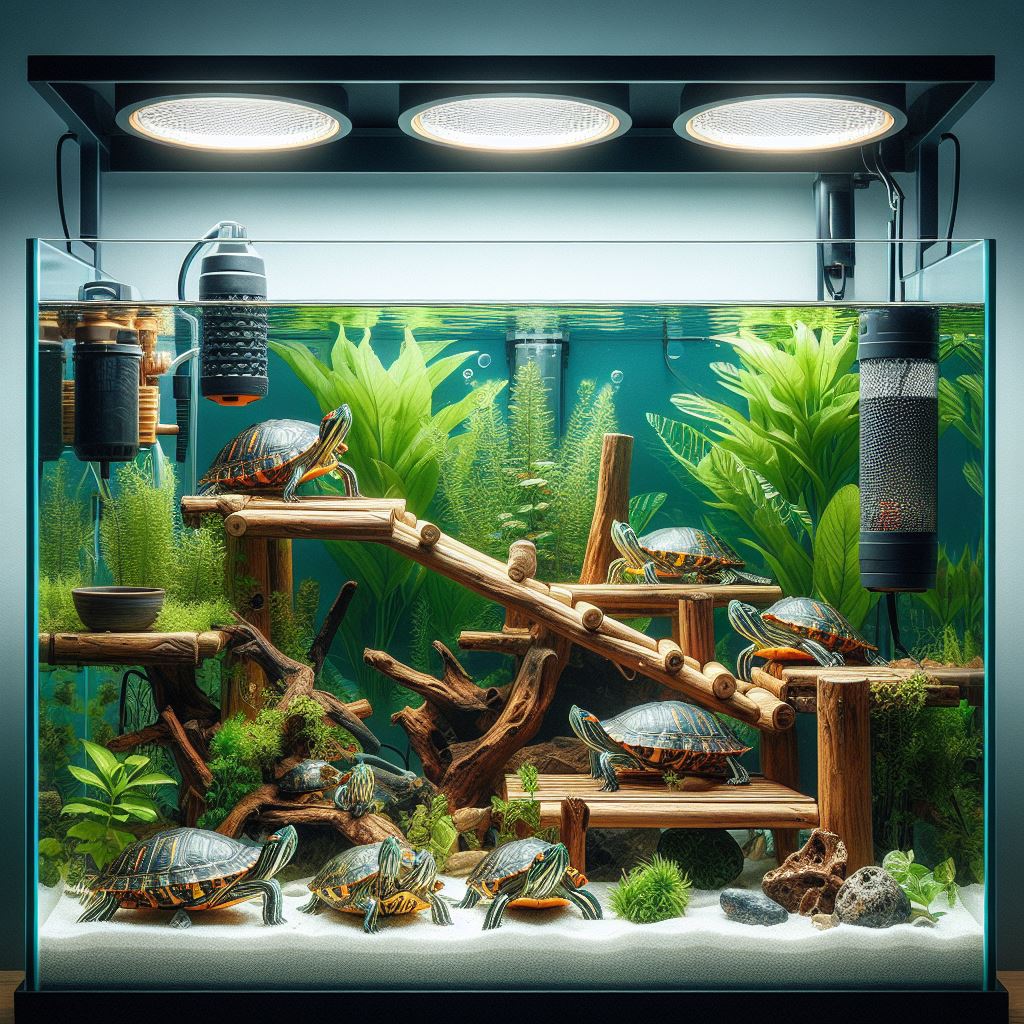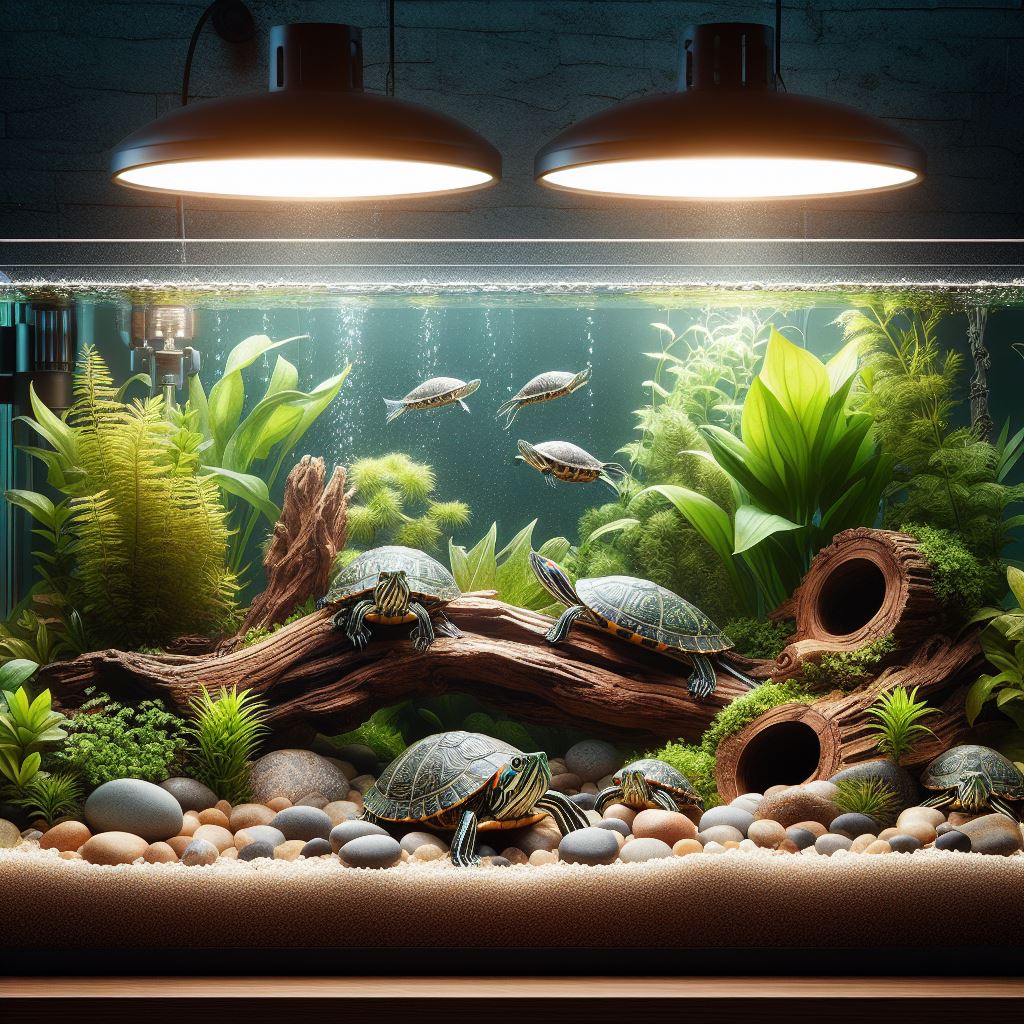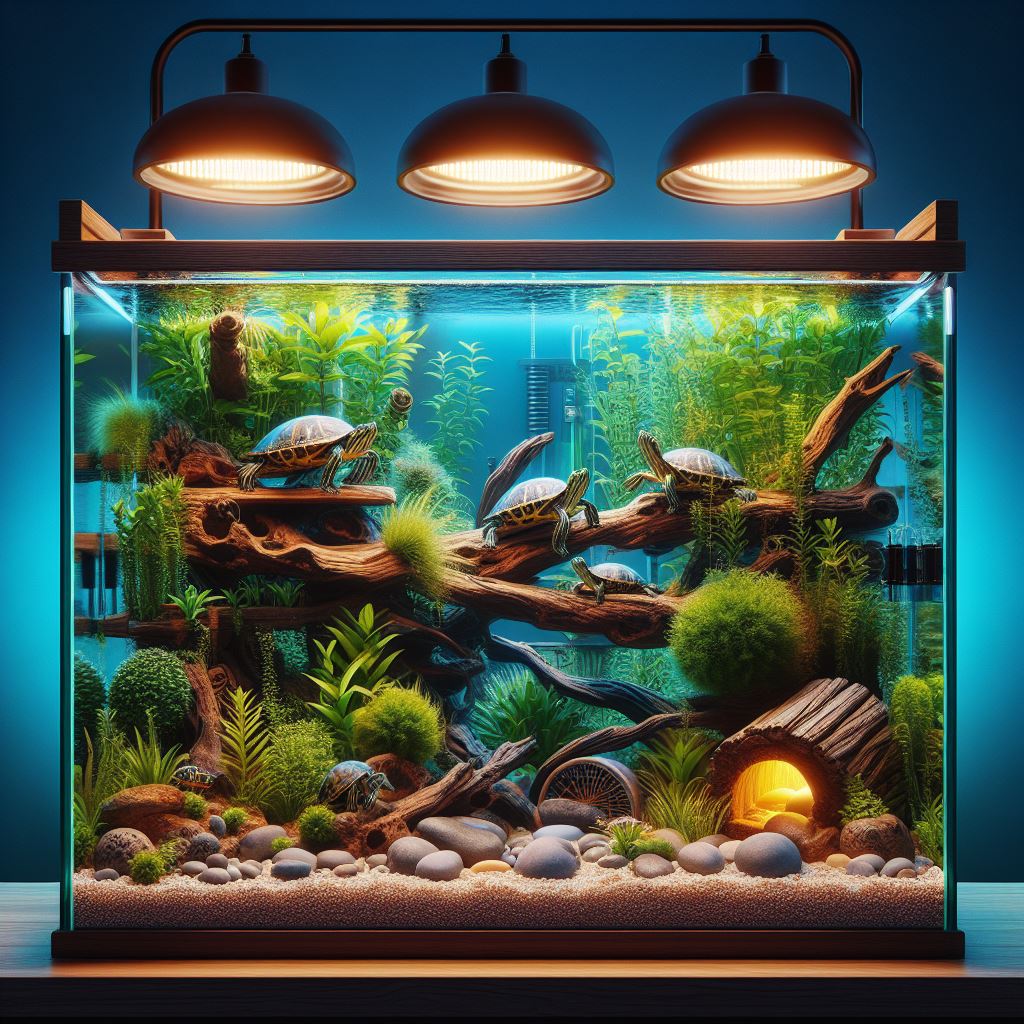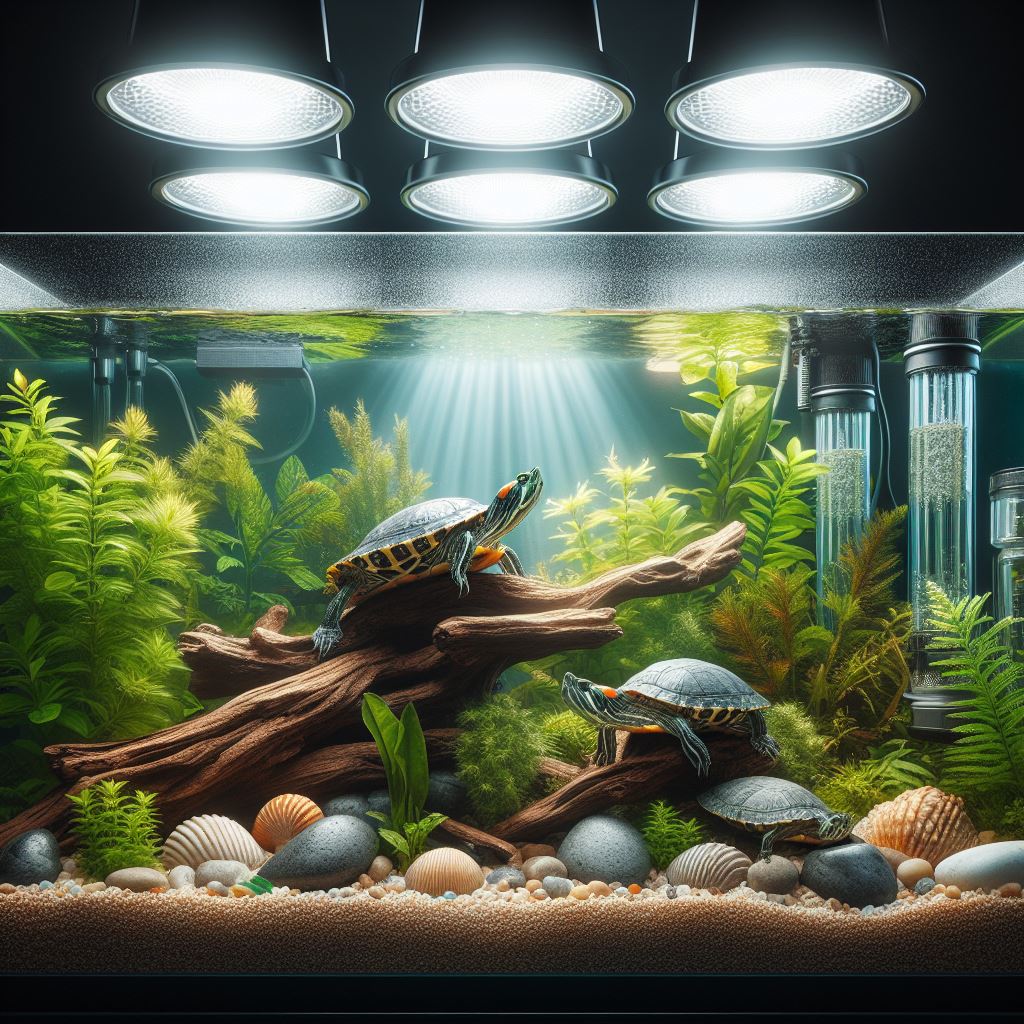Ensuring optimal living conditions for red-eared sliders in captivity is essential for their health and well-being. These beautiful turtles require a properly equipped tank to thrive and lead a happy life. It is crucial to provide them with the right environment that mimics their natural habitat to prevent any potential health issues. Heating and lighting are crucial for maintaining appropriate temperatures, while a filtration system is necessary to keep their water clean.
Providing them with a proper basking area and enough space to swim and explore is also key to their overall wellness. Furthermore, adequate nutrition and regular tank maintenance are crucial for their long-term health and longevity. This blog post will offer a comprehensive guide on everything a red-eared slider needs in their tank to ensure a happy and healthy life.
Key Takeaways:
- Proper filtration: Red eared sliders require a large tank with a powerful filtration system to maintain water quality and cleanliness.
- Basking area: These turtles need a dry, warm basking area to regulate their body temperature and dry off after swimming.
- UVB lighting: Red eared sliders need access to UVB lighting to help them metabolize calcium and maintain proper shell and overall health.
Tank Requirements
Clearly, providing the right tank environment is essential for the health and well-being of your red-eared slider. From tank size and volume to water quality and filtration, there are several key factors to consider.
Tank Size and Volume
It is crucial to provide adequate space for a red-eared slider to swim, bask, and move around comfortably. A tank size of at least 75 gallons is recommended for a single adult red-eared slider, with an additional 10 gallons of water for each additional turtle. This ensures that they have enough room to exhibit their natural behaviors and reduces stress.
Water Quality and Filtration
The water in the tank must be kept clean and free of toxins to prevent health issues in red-eared sliders. A high-quality filtration system is essential to remove waste and maintain water quality. Regular water changes, typically of 25% to 50% of the tank volume every 2-4 weeks, are also necessary to keep ammonia and nitrate levels in check. Additionally, investing in a water testing kit to monitor the water parameters is recommended to ensure a healthy aquatic environment for the turtles.
Habitat Design
Some crucial elements are needed in the habitat design for red eared sliders to ensure they have a comfortable and enriching environment, allowing them to thrive in captivity.

Substrate Selection
When it comes to substrate selection for a red eared slider tank, it’s essential to choose a substrate that is safe, non-toxic, and easy to clean. Avoid gravel or small rocks as they can be ingested, leading to potential health issues. Opt for a substrate such as large river rocks or a bare-bottom tank to prevent any accidents or health concerns for the slider.
Decor and Hiding Places
Adding decor such as aquatic plants, driftwood, and rocks not only enhances the visual appeal of the tank but also provides hiding places for the red eared slider. This helps to alleviate any stress and provides a sense of security. However, it’s crucial to ensure that the decor is securely placed to avoid any accidents or injuries to the slider.
Basking Area Essentials
One of the most important elements of a red eared slider tank is a basking area. This area should include a platform or dock where the slider can completely leave the water to bask. The basking area should be sturdy enough to support the weight of the slider and positioned under a heat lamp or UVB light to provide the necessary heat and UVB radiation. Having a proper basking area is crucial for the health and well-being of red eared sliders.
Temperature and Lighting
To ensure the health and well-being of a red-eared slider, it is crucial to provide the appropriate temperature and lighting in their tank. Proper temperature and lighting can impact the turtle’s metabolism, digestion, immune system, and overall activity level.

Optimal Water Temperature
Red-eared sliders thrive in water that is kept between 75 to 85 degrees Fahrenheit. It is important to use a reliable water thermometer to monitor the temperature consistently. The table below highlights the key aspects of maintaining the optimal water temperature for red-eared sliders:
Optimal Water Temperature Table:
| Aspect | Details |
| Minimum Temperature | 75 degrees Fahrenheit |
| Maximum Temperature | 85 degrees Fahrenheit |
| Water Thermometer | Use a reliable thermometer to monitor temperature |
UVB Lighting for Health
Red-eared sliders require UVB lighting to aid in the regulation of calcium and phosphorus metabolism. This is essential for the development and maintenance of healthy bones and shell. It is important to provide a UVB light source for 10-12 hours a day to ensure the turtle’s well-being. The table below outlines the key details for UVB lighting in a red-eared slider’s tank:
UVB Lighting Table:
| Aspect | Details |
| UVB Light Source | Provide UVB light for 10-12 hours a day |
| Metabolism Regulation | Aids in the regulation of calcium and phosphorus metabolism |
| Shell and Bone Health | Essential for healthy bone and shell development |
Nutrition and Feeding
Unlike some other pets, like cats or dogs, red-eared sliders have very specific dietary needs. It is important for their health and well-being to provide them with a well-balanced diet that meets all of their nutritional requirements.
Diet Composition
Red-eared sliders are omnivores, meaning they eat a combination of plant and animal matter. In the wild, they consume a variety of foods such as aquatic plants, algae, insects, small fish, and crustaceans. It is important to replicate this diverse diet in captivity to ensure they receive all the essential nutrients. A good rule of thumb is to feed them a mix of commercial turtle pellets, leafy greens, and live or frozen protein sources such as bloodworms or shrimp. It is crucial to provide a variety of foods to prevent nutritional deficiencies or imbalances.
Feeding Schedules and Practices
When it comes to feeding red-eared sliders, it is essential to establish a regular schedule. Typically, juveniles should be fed daily, while adults can be fed every other day. Young turtles have a higher growth rate and metabolism, requiring more frequent meals. Overfeeding can lead to obesity, which can lead to health issues such as organ damage and a reduced lifespan. It is important to monitor their food consumption and adjust portion sizes as needed. Feeding should take place in a separate container to prevent the build-up of uneaten food in the tank, which can lead to water quality issues. Additionally, it is recommended to provide a mix of fresh and commercially prepared foods to ensure a well-rounded diet.
Health and Maintenance
Not only should red-eared sliders have a proper tank setup, but their overall health and maintenance should also be closely monitored. Regular tank maintenance and recognizing health issues are critical for keeping these turtles healthy and thriving.

Regular Tank Maintenance
Regular tank maintenance is essential for keeping your red-eared slider healthy. This includes cleaning the tank and changing the water regularly to prevent the buildup of harmful bacteria and algae. Water quality is crucial for the turtle’s health, so using a high-quality water filter and testing the water regularly for proper pH levels is a must. Weekly water changes of at least 25% are necessary to maintain a clean and healthy environment for the red-eared slider.
Recognizing Health Issues
Recognizing health issues early on is crucial for the well-being of a red-eared slider. Signs of respiratory infections, shell rot, eye infections, and parasites should be closely monitored, and immediate action should be taken if any concerning symptoms appear. Timely consultation with a reptile veterinarian is vital for maintaining the health of a red-eared slider. Regular health check-ups can help detect and treat potential health issues before they become serious problems.
Conclusion and final thoughts
Drawing together all the necessary elements for a red-eared slider’s tank, it is clear that these reptiles have specific requirements for their environment. They need a spacious tank with clean, filtered water, a basking spot, and access to ultraviolet light. In addition, they require a balanced diet and regular monitoring of their health and behavior. By providing these essentials, owners can ensure that their red-eared slider is able to thrive in captivity.
FAQ
Q: What do red-eared sliders need in their tank?
A: Red-eared sliders need a spacious tank to accommodate their size. A tank with a minimum size of 75 gallons is recommended for one adult slider. The tank should also have a basking area, heat lamp, UVB light, water filter, and a variety of aquatic plants and a docking area for them to rest and bask.
Q: What should the water temperature be in a red-eared slider’s tank?
A: The water in a red-eared slider’s tank should be kept at a consistent temperature of around 75-85 degrees Fahrenheit. It is crucial to invest in a good water heater to maintain this temperature. Red-eared sliders are cold-blooded creatures and depend on the water temperature to regulate their body temperature and metabolism.
Q: What do red-eared sliders eat and how often should they be fed?
A: Red-eared sliders are omnivores and require a varied diet. They should be fed a combination of commercial turtle pellets, leafy greens, vegetables, and occasional live or frozen prey such as fish or insects. Young sliders should be fed every day, while adult sliders can be fed every other day. It’s essential to monitor their food intake to prevent overfeeding and obesity.





Leave a Reply